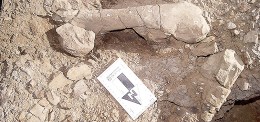Dinosaurs from the Deep South
Southernmost Fossils of Dinosaurs from the Americas Described
A team of palaeontologists working in the most southerly part of Chile (South America), have described the fragmentary remains of Cretaceous-aged ornithopod dinosaurs. The fossils, although very disarticulated, are definitely remains of bird-hipped dinosaurs and they are the most southernmost dinosaur fossils to be found to date in the Americas. The discovery has taken place in the Chilean region of the Magallanes, more than 1,000 miles south of the Chilean capital of Santiago. The area is relatively remote, sparsely populated and poorly served by roads.
Dinosaur Discovery
However, a team of scientists from the Chilean Antarctic Institute (INACH) supported by fellow researchers from the National Natural History Museum and the University of Chile have been working in the area for three years to establish a better understanding regarding the natural history of this beautiful yet remote part of the world.
The fossils come from Upper Cretaceous sediments that had been studied by the eleven member research team, the fossils, representing a bone bed are either hadrosaurs (duck-billed dinosaurs) or basal iguanodonts. The team are hopeful that further investigations will enable them to make a genus diagnosis.
A Picture of One of the Fossil Bones at the Dig Site
Picture credit: Chilean Antarctic Institute
The Chilean Antarctic Institute
Commenting on the research, Marcel Leppe, a palaeobotanist from the Chilean Antarctic Institute stated:
“This discovery constitutes a milestone in world palaeontology that also opens the way to studying the evolution of flora and fauna between the extreme south of the Americas and Antarctica.”
The scientists also discovered that underlying the fossilised bones there was a layer of plant fossils. The two deposits represent different deposition elements preserved as a record in the life of an ancient river channel. The leaves have been identified as belonging to the Nothofagus genus (Southern Beech). For much of the Mesozoic, Antarctica and South America were joined together as part of a super-continent called Gondwanaland.
Nothofagus Fossils
Fossils of Nothofagus have recently been found in Antarctica in slightly older strata. The scientists have hypothesised that this deciduous tree may have evolved in Antarctica and gradually spread throughout the land mass of Gondwanaland. This has resulted in Southern Beeches being found today as places so geographically dispersed such as New Zealand, Argentina, Chile, New Caledonia and Australia.
There are thirty-six species of Nothofagus known today, it seems likely that the dinosaurs which roamed the land that was to become one of the most southerly points of the Americas, fed on the leaves of these trees.
For dinosaur models and replicas of South American dinosaurs and other prehistoric animals: CollectA Deluxe Scale Prehistoric Animal Models.


